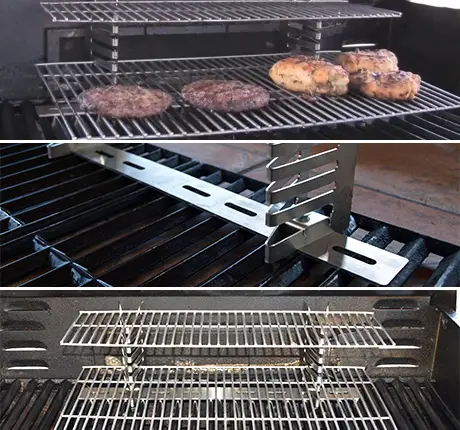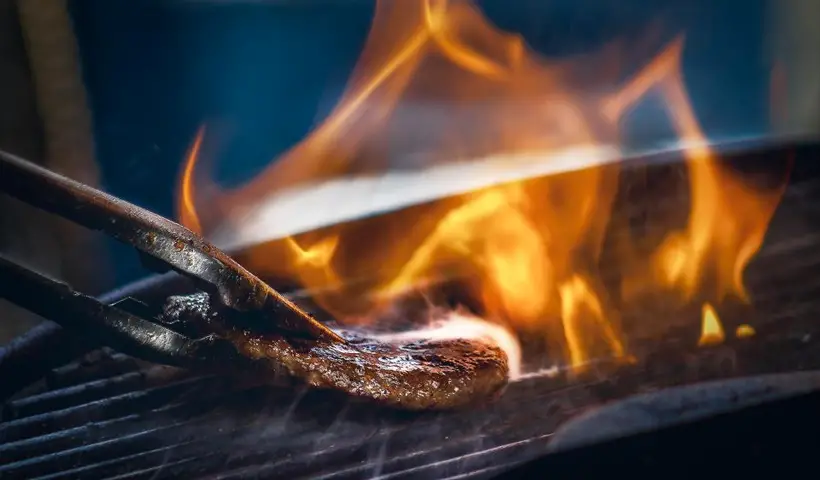Your grilling technique is going to make or break your BBQ technique so here’s a low down on the differences between direct and indirect grilling.
If you’re planning a barbecue, it is important to understand the kind of grilling technique you will need to use: direct or indirect. It is not as if one is superior to the other. The food that you wish to cook will determine whether you need a direct or an indirect grill.
Direct and Indirect Grilling have their own pros and cons, you need to understand what is best for you and what suitably fits your needs. First, let us know what we understand by direct and indirect grilling, then their advantages and disadvantages.
Direct Grilling
Direct grilling means placing the food directly over the source of heat, whether coal or gas. This method works best for small and tender stuff like burgers, hot dogs, vegetables and small pieces of meat. Basically, any item that requires less than 30 minutes to cook. Direct grilling gives a crispy, seared crust to the food.
Make careful use of a drip tray as drippings might land directly in the fire during the process, leading to dangerous flare-ups. Flip all the items just once in order to expose both the sides to heat, when you’re halfway through the cooking time.
You need to keep a close watch to prevent the food from burning. This doesn’t mean you will constantly lift the lid to peek at it. It will only lengthen the cooking time by letting off heat and smoke.
How to Set up the grill?
- For a charcoal grill, make a single even layer of coals that extends an inch or two beyond the edges of food to make a zone of fire over which the food will be grilled.
- For a gas grill, set all the burners at the same temperature to grill the food evenly. Always light a gas barbecue keeping the lid open.
How to Build a triple zone fire?
Steven Raichlen explains how one can create variations of temperature consisting of a hot, medium and a safety zone even in a direct grill. You can use the hot zone for searing, the medium zone for cooking and the safety zone can help you in case the food starts to burn
- In case of a charcoal grill: make a double layer of coal on one-third of the grill, keep a single layer in the center and the remaining one third without coal to serve as a safe zone.
- In case of a gas grill: set one of the burners on a high flame, the next on a medium flame and turn off the remaining one to make a safety zone.
Direct and Indirect Grilling on a Weber Charcol Grill
Indirect Grilling
Indirect grilling, as the name suggests, involves placing the food to one side of the source of heat and not directly above it. The method is used for larger, tougher foods that require long durations over a low temperature to get cooked. Large pieces of meat, whole birds, ribs, etc. turn out best when cooked over indirect heat, with juicier meats.
Indirect grilling is a slow process that evenly cooks all the sides of the food through reflected heat. It doesn’t require you to flip the food during the whole process. You will never end up with large pieces of meat charred on the surface while almost raw at the center!
How to set up the grill
- For a charcoal barbecue, light the coals using a chimney starter, lighter fluid or electrically. Once the desired temperature is reached, divide it into two piles into the opposite sides of the grill, leaving a sufficient gap in between to place the food at the center.
- For a gas barbecue, light the outside burners, keeping the ones in between turned off. Cook over the one which was not lighted. If you have a two burner gas, light one of them to a high flame and cook on the other.
Direct and Indirect Grilling on a Weber Gas Grill
Pros and Cons of Direct and Indirect Grilling
Controlling Temperatures: Temperature control is really very important when it comes to outdoor grilling. Nowadays when there is a controlled setting for everything, controlling the temperature of your kitchen’s oven is easier, just push some buttons or turn the knob and you are done, but controlling temperature is much more difficult with the outdoor grilling, especially on charcoal grills.
Direct and indirect cooking: Using direct and indirect heat to grill is common and also an effective way to control the temperature while cooking. But what is direct and indirect heat? Learn from the instance, let us say you are using a charcoal grill for cooking. All the coals are pushed to one side meaning one side with coals and another side is without it. The coal side is the example of direct heat as the food is cooked directly over the heat i.e. Direct Heat.
Now, the other side of the grill doesn’t have coals but you can still cook food as it is taking indirect heat from the coals of the other side i.e. Indirect Heat. Thus, in this setup, you have to different sides of the grill to cook at two different temperatures.
Hence it becomes much easier to cook that thick piece of BBQ chicken without charring the outside before the meat is thoroughly cooked on the inside. You can follow the same process with gas grills, keep one side of the burner on and another side of.
Disadvantages of using Indirect Heat
While cooking on your outdoor charcoal grill, using indirect heat can certainly help you to control temperatures but there are some downsides.
The very first thing is, it can be difficult for the indirect heat portion to get hot enough. Secondly, your grill space may become greatly reduced. Suppose you want the indirect grilling side, you may lose half of your grilling space. Finally, you are still limited in your temperature control.
But there is an easy solution!
Okay, so we know how important temperature control is to grilling but for newbies, it can often be frustrating and confusing and that’s where accessories such as a BBQ Booster come in handy. While not the fanciest of equipment (but certainly worth the extra buck), the boosters are just grates that allow you to cook at different heights, very similar to how temperature can be controlled on a kitchen oven.

It gives you better control over your cooking temperature on the outdoor grill by providing 7 different height levels for the grate. You can cook from a height of 1 ½ to 5 ½ inches. It also has two cooking grates so that you can use multiple cooking levels simultaneously.
Now break out the grill and condiments and get cookin’!
